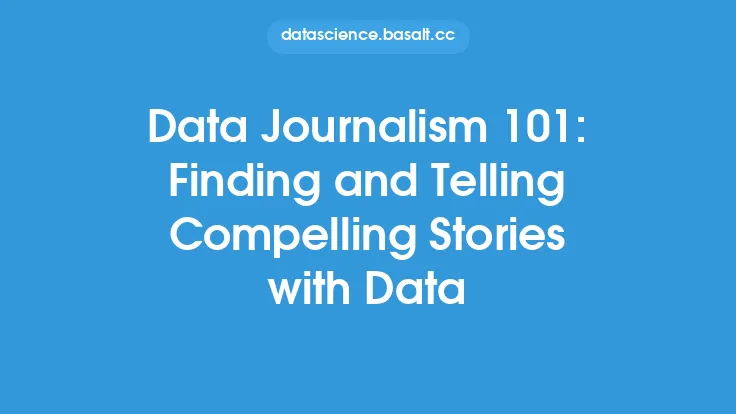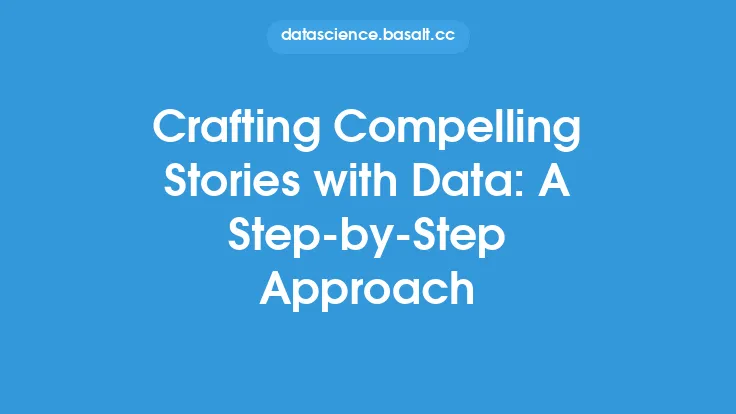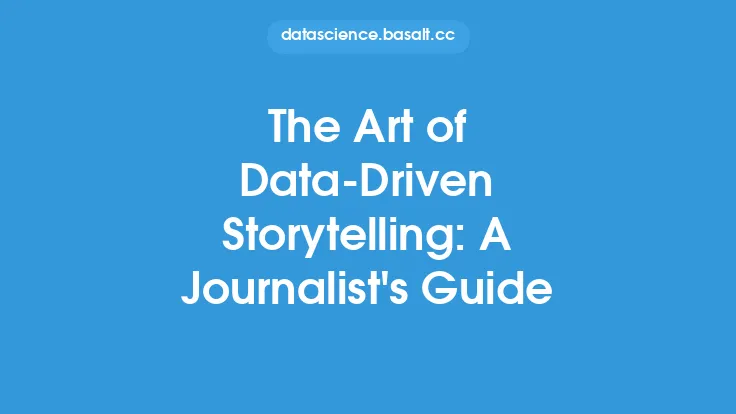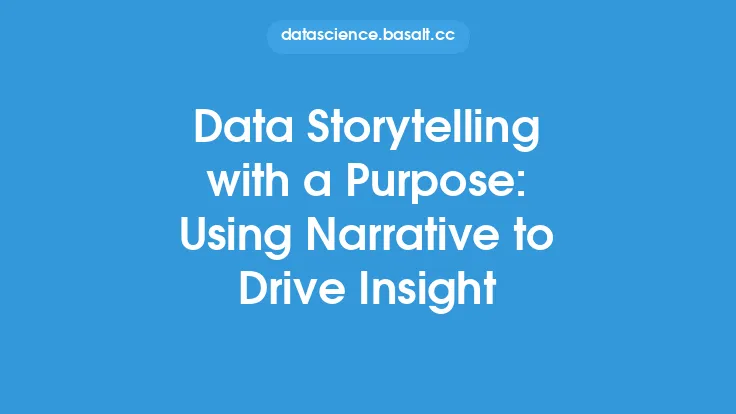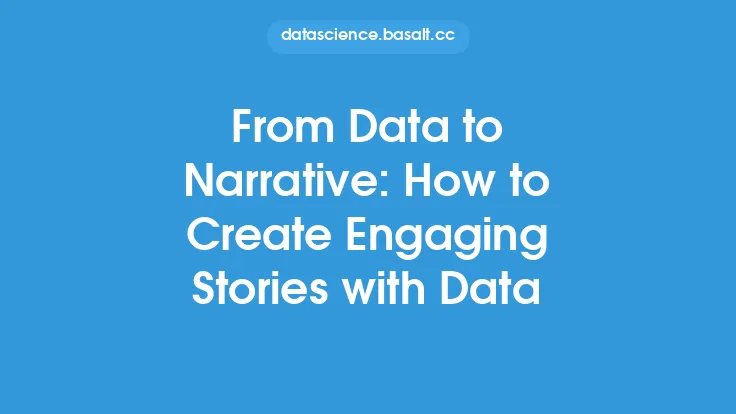As a data journalist, the ability to tell compelling stories with data is crucial in today's information age. With the increasing amount of data being generated every day, it's essential to have the right tools and techniques to extract insights and present them in a way that resonates with audiences. A data journalist's toolbox is filled with a variety of software, programming languages, and methodologies that enable them to collect, analyze, and visualize data to tell stories that inform, engage, and sometimes even challenge the status quo.
Introduction to Data Journalism Tools
Data journalists rely on a range of tools to collect, clean, and analyze data. These tools can be broadly categorized into several groups, including data scraping and crawling tools, data analysis and statistics software, data visualization libraries, and programming languages. Some of the most popular data scraping and crawling tools include Beautiful Soup, Scrapy, and Import.io, which allow journalists to extract data from websites, documents, and other online sources. For data analysis and statistics, tools like Excel, SQL, and R are commonly used to clean, transform, and analyze data. Data visualization libraries like D3.js, Matplotlib, and Tableau enable journalists to create interactive and dynamic visualizations that help to communicate complex data insights.
Data Analysis and Statistics
Data analysis and statistics are critical components of data journalism. Journalists use statistical methods to identify trends, patterns, and correlations in data, which can help to uncover insights and tell stories. Some common statistical techniques used in data journalism include regression analysis, hypothesis testing, and confidence intervals. Data journalists also use data mining techniques like clustering, decision trees, and neural networks to identify patterns and relationships in large datasets. Programming languages like Python, R, and SQL are commonly used for data analysis and statistics, and libraries like Pandas, NumPy, and Statsmodels provide efficient data structures and algorithms for data manipulation and analysis.
Data Visualization
Data visualization is a crucial aspect of data journalism, as it enables journalists to communicate complex data insights in a clear and concise manner. Data visualization libraries like D3.js, Matplotlib, and Tableau provide a range of tools and techniques for creating interactive and dynamic visualizations. Journalists use various types of visualizations, including bar charts, line charts, scatter plots, and heat maps, to show trends, patterns, and relationships in data. Interactive visualizations like zoomable maps, sortable tables, and animated charts can help to engage audiences and provide a more immersive experience. Data journalists also use storytelling techniques like narrative, annotation, and animation to add context and depth to their visualizations.
Programming Languages and Libraries
Programming languages and libraries play a vital role in data journalism, as they provide the tools and techniques needed to collect, analyze, and visualize data. Python is a popular programming language used in data journalism, thanks to its simplicity, flexibility, and extensive range of libraries. The Pandas library provides efficient data structures and algorithms for data manipulation and analysis, while the NumPy library provides support for large, multi-dimensional arrays and matrices. The Matplotlib and Seaborn libraries provide a range of tools and techniques for creating static and interactive visualizations. R is another popular programming language used in data journalism, thanks to its extensive range of libraries and packages for data analysis and visualization.
Best Practices for Data Journalism
Data journalists follow a range of best practices to ensure that their stories are accurate, informative, and engaging. These best practices include verifying data sources, documenting data collection and analysis methods, and providing transparent and reproducible results. Data journalists also use techniques like data normalization, data transformation, and data aggregation to ensure that their data is accurate and reliable. They also use storytelling techniques like narrative, annotation, and animation to add context and depth to their visualizations. Finally, data journalists use interactive and dynamic visualizations to engage audiences and provide a more immersive experience.
The Future of Data Journalism
The future of data journalism is exciting and rapidly evolving, with new tools, techniques, and methodologies emerging all the time. The increasing use of artificial intelligence, machine learning, and natural language processing is enabling data journalists to analyze and visualize large datasets more efficiently and effectively. The rise of immersive technologies like virtual and augmented reality is also providing new opportunities for data journalists to engage audiences and tell stories in innovative and interactive ways. As data continues to play an increasingly important role in our lives, the demand for skilled data journalists who can extract insights and tell compelling stories with data will only continue to grow.
